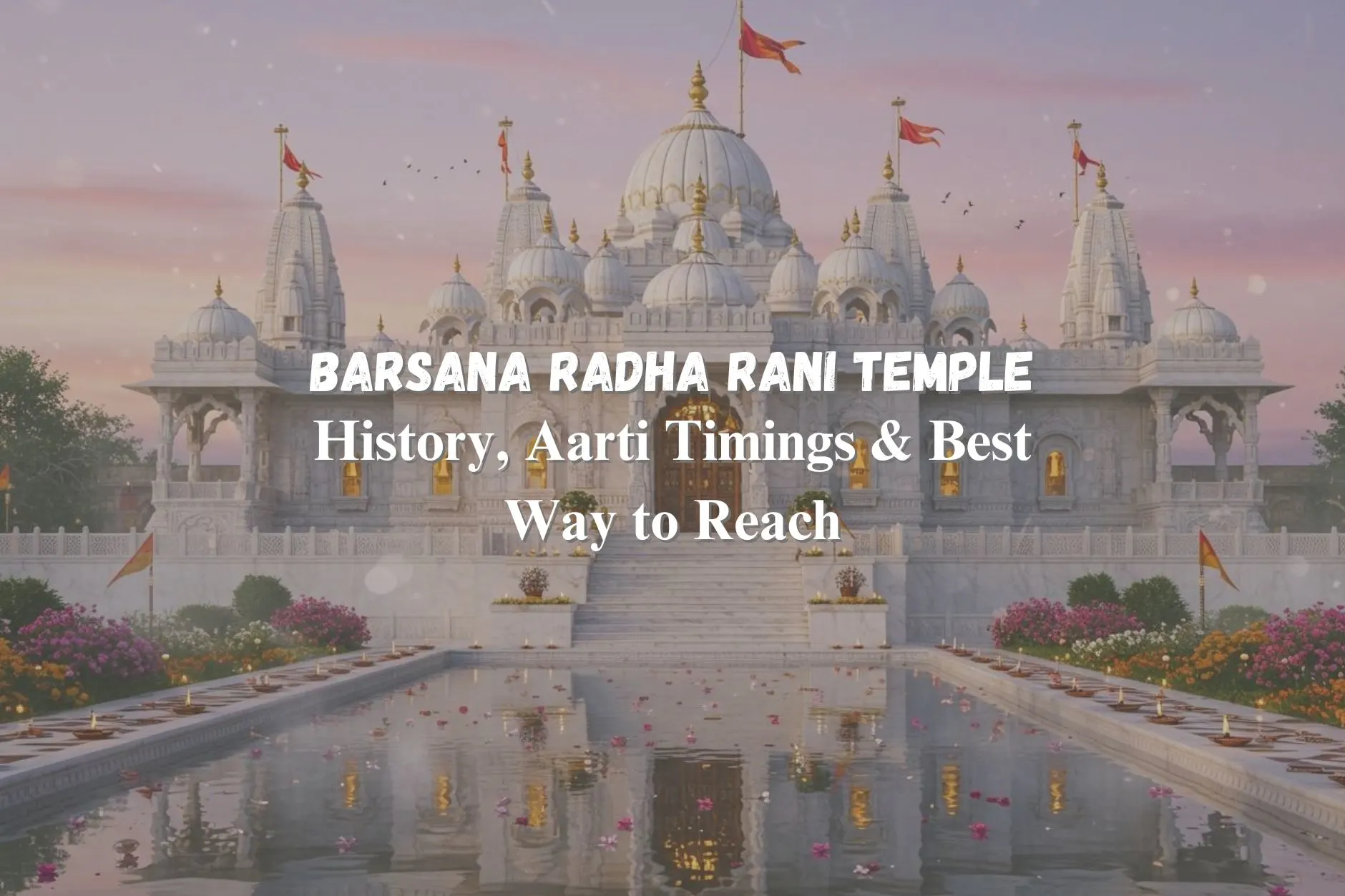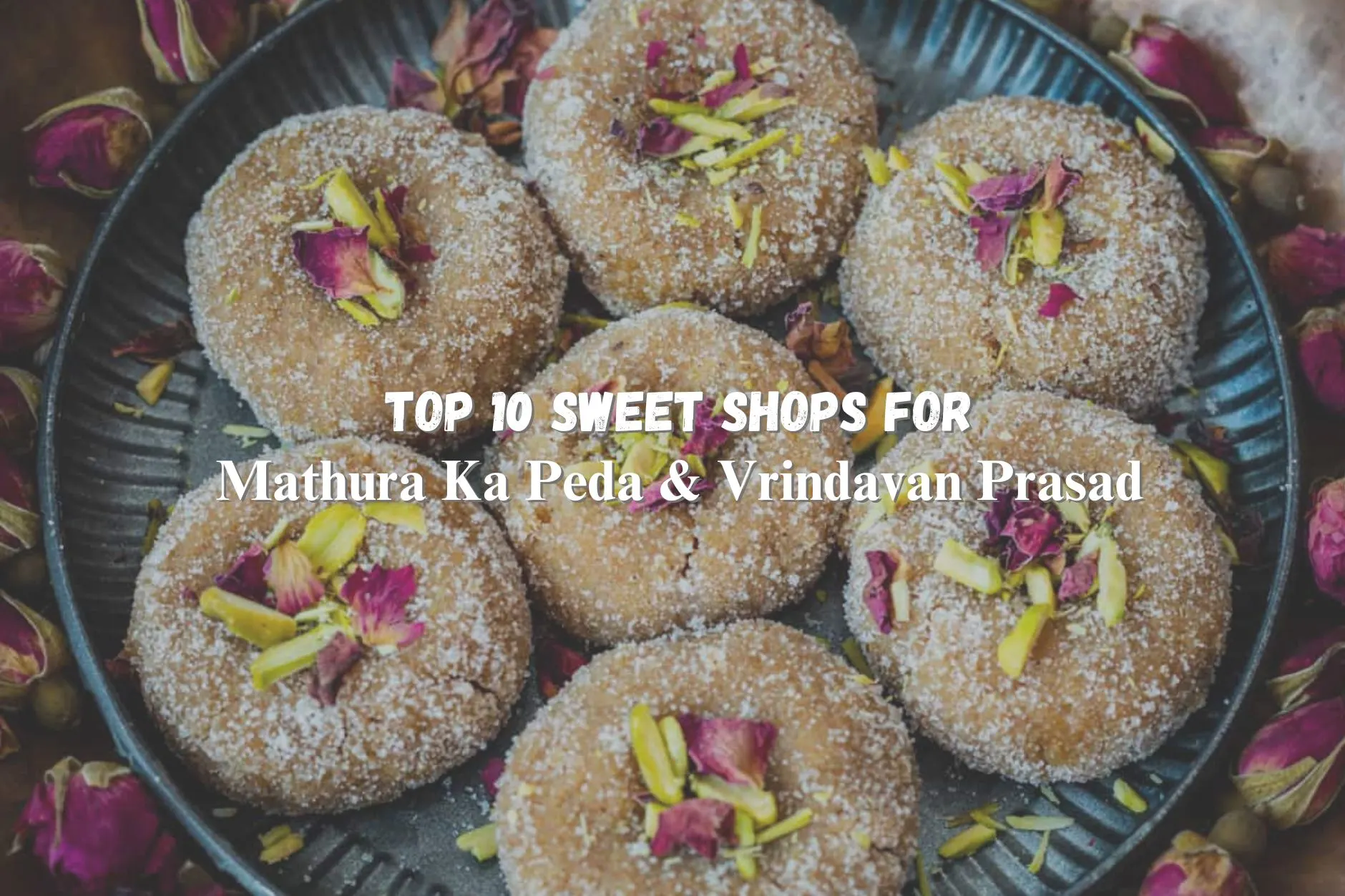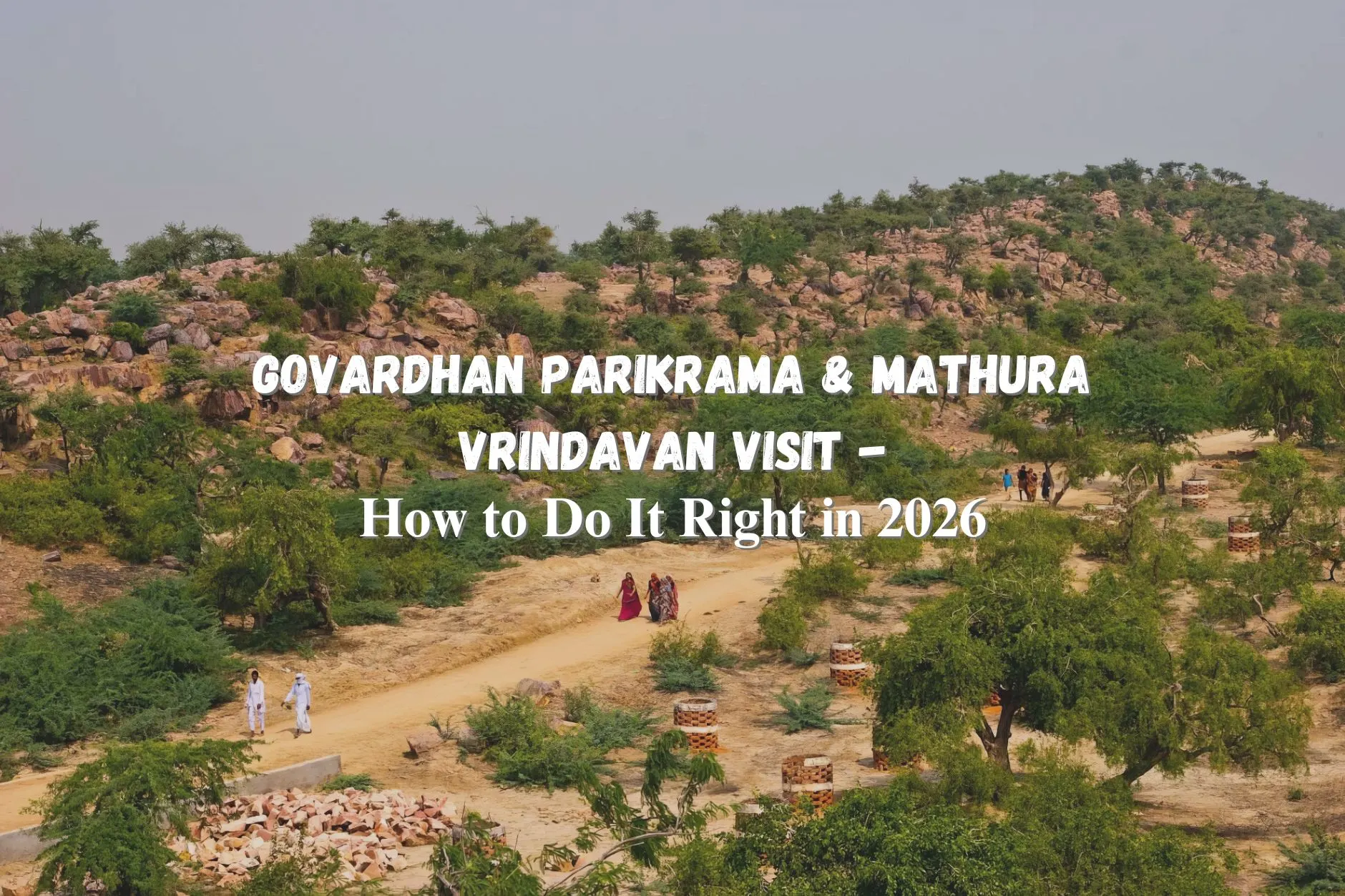Are you planning a soul-stirring trip to Mathura and Vrindavan? These two sacred towns in the heart of Uttar Pradesh are not just places—they’re spiritual experiences. Home to Lord Krishna’s legends, the streets here echo with chants, temples shine with devotion, and the seasons bring different moods of Braj Bhoomi alive. But to fully enjoy this spiritual and cultural journey, timing matters.
Knowing when to visit, what festivals to witness, and how to navigate crowd levels can make or break your trip. This comprehensive guide covers everything—from ideal travel months and Vrindavan weather patterns to festival calendars, accommodation tips, and insider travel advice.
Quick Overview: Travel Seasons & Crowd Levels
| Season | Weather | Crowd Level | Ideal For |
|---|---|---|---|
| October – March | Pleasant, cool | High | Pilgrimage, sightseeing, major festivals |
| April – June | Hot and dry | Low | Budget travel, short temple visits |
| July – September | Humid, rainy | Moderate | Scenic views, peaceful experiences |
1. Why Timing Matters
The spiritual and cultural essence of Mathura and Vrindavan transforms with each season. In winters, the towns welcome countless devotees walking barefoot to the ghats.
Summers are quieter but provide solitude for self-reflection. Monsoons paint the region lush green, amplifying its beauty.
Whether you’re seeking the vibrance of Holi, the calm of a spiritual escape, or the affordability of off-season travel, timing is everything. Choosing the best time to visit Mathura will determine the richness and comfort of your experience.
2. October to March: Peak Season for Devotees
If you’re looking for ideal weather and spiritual energy, October to March is the perfect season. The Vrindavan weather remains cool and breezy, with temperatures hovering between 12°C and 25°C.
These months are packed with religious activities, celebrations, and devotional tourism.
From boat rides on the Yamuna to temple hopping at dawn and evening aartis, this is when Mathura and Vrindavan feel the most vibrant and alive.
3. Major Festivals During Peak Season
During these cooler months, the Mathura festival calendar comes alive:
- Janmashtami (Aug/Sept): Celebrates the divine birth of Lord Krishna with grand decorations, bhajans, midnight processions, and temple drama performances.
- Govardhan Puja (Oct/Nov): Held a day after Diwali, this festival involves massive food offerings and ritual circumambulation around Govardhan Hill.
- Braj Mahotsav (February): A cultural treat featuring traditional dance, music, spiritual discussions, and folk theatre—showcasing Braj’s timeless charm.
Pro tip: Book hotels well in advance—these months are packed, and accommodation fills up fast.
4. April to June: Off-Season with Intense Heat
This is the least popular yet surprisingly affordable time to visit. The temperature can soar to 45°C, especially during May, making afternoons almost unbearable.
However, for budget-conscious travelers, this season offers huge advantages. You’ll find:
- Cheaper hotel rates
- Less crowd at temples
- Easier access to darshan
Just remember to plan temple visits early in the morning or after sunset to avoid the sweltering heat.
5. Pros and Cons of Summer Visits
Pros:
- Discounted hotels and dharmshalas
- Calm, quiet temples with fewer pilgrims
- Shorter waiting times at major attractions
Cons:
- Scorching weather limits outdoor activities
- Increased risk of heat exhaustion or dehydration
- Reduced walking tours due to high midday temperatures
Carry a water bottle, wear light cotton clothes, apply sunscreen, and rest often.
6. July to September: The Monsoon Magic
As the rains begin, Vrindavan transforms into a lush, peaceful landscape. Though it’s humid, the beauty of green forests and calm riverbanks is unmatched.
If you’re a nature lover, solo traveler, or photographer, this season adds visual and spiritual depth to your journey.
7. Monsoon Festival Highlights
The rains bring their own spiritual charm, especially with local festivities:
- Hariyali Teej: Women celebrate the greenery with songs, swings in temple courtyards, and spiritual bhajans.
- Radha Ashtami: Celebrated in Barsana, this festival honors the birth of Radha with kirtans, dances, and spiritual fervor.
Roads may be muddy—carry an umbrella, wear non-slip footwear, and expect occasional travel delays.
8. Holi: Vrindavan’s Most Famous Festival
Holi in Braj is legendary. Taking place in March, this isn’t just a color festival—it’s an emotional, spiritual celebration of Krishna and Radha’s divine love.
Holi Event Highlights:
- Lathmar Holi (Barsana): Women playfully beat men with sticks—a symbolic reenactment of Krishna’s pranks.
- Phoolon Wali Holi (Vrindavan): A unique event where flowers replace colors.
- Widow Holi (Pagal Baba Ashram): A progressive celebration where widows defy old norms by participating joyfully.
Expect massive crowds, fully booked hotels, and complete town engagement. If you’re a cultural traveler, this is the best time to visit Mathura.
9. Crowd Levels by Month
| Month | Crowd Intensity |
|---|---|
| January | High (Winter rush) |
| February | Moderate |
| March | Very High (Holi) |
| April–June | Low |
| July–August | Low–Moderate |
| September | Moderate |
| October–November | High (Festivals) |
| December | High (Holiday season) |
10. Tips for Managing Crowds
- Visit early in the morning (before 9 AM)
- Avoid weekends and festival dates if seeking peace
- Book your stay 30+ days in advance
- Use e-rickshaws for quick navigation through narrow lanes
A bit of planning ensures a more soulful, meaningful experience.
11. Best Months Based on Your Interests
| Interest Type | Recommended Months |
|---|---|
| Spiritual Pilgrimage | October – March |
| Festival & Culture | March (Holi), August (Janmashtami) |
| Budget & Simplicity | May, June |
| Calm & Nature | July, September |
Choose your month based on what you seek most.
12. Combine With Nearby Destinations
Don’t just stick to the main towns—explore surrounding gems:
- Govardhan Hill – Walk the 21 km parikrama during Govardhan Puja
- Barsana & Nandgaon – Celebrate Radha Ashtami and relive Krishna’s leelas
- Gokul & Mahavan – Lesser-known, serene spots with deep spiritual vibes
Each nearby place adds a layer of significance and serenity to your journey.
13. Where to Stay During Peak Season
Accommodation can be tight, so consider booking at:
- Hotel Brijwasi Lands Inn – A comfortable 4-star option near Mathura Railway Station
- Nidhivan Sarovar Portico – A premium stay experience in Vrindavan
- Budget Dharmshalas – Affordable and centrally located, ideal during peak events
Always check festival dates before confirming stays to avoid last-minute surprises.
14. What to Pack Based on Season
| Season | Essentials |
|---|---|
| Winter (Oct–Feb) | Light woolens, walking shoes, shawls |
| Summer (Apr–Jun) | Cotton clothes, sunscreen, hydration salts |
| Monsoon (Jul–Sept) | Umbrella, raincoat, anti-slip footwear |
Smart packing = comfortable, worry-free travel.
15. Final Thoughts: Plan Smart, Travel Happy
Ultimately, the best time to visit Mathura and Vrindavan depends on your purpose—be it spirituality, celebration, or peace. Every season offers something unique—from misty mornings to vibrant Holi colors.
Use this guide to tailor your journey. Whether you’re traveling with family, alone, or as a photographer, Braj Bhoomi is waiting to embrace your spirit.
Ready to Discover the Best of Mathura & Vrindavan?
🌐 Visit us: www.mathurataxiservice.com
🎯 Check our Mathura Vrindavan Package
💸 Explore our Budget-Friendly 2-Day Trip Plan
📞 Contact us: Contact Us
Your soulful journey awaits—plan smart, travel happy, and experience the divine rhythm of Braj in every season.
FAQs
1. What is the best season to visit Mathura and Vrindavan?
The best time to visit is October to March, when the weather is pleasant and ideal for temple visits.
2. Is summer a good time to visit these places?
Summers (April–June) are very hot and generally avoided unless you’re attending a specific event.
3. Which festivals are most popular in Mathura and Vrindavan?
Janmashtami and Holi are the biggest festivals celebrated with grandeur and devotion.
4. When does Holi take place in Vrindavan?
Holi is usually celebrated in March, but festivities start weeks in advance in Vrindavan and Barsana.
5. Is Janmashtami very crowded in Mathura?
Yes, Janmashtami attracts thousands of pilgrims, so expect heavy crowds and tight security.
6. What are the off-season months for a peaceful trip?
July to September and the peak summer months see fewer tourists, offering quieter visits.
7. Does it rain heavily during the monsoon?
Yes, July and August bring moderate to heavy rains, which may disrupt travel plans.
8. Are temples open year-round?
Yes, all major temples remain open throughout the year, including during monsoon and summer.
9. What are the winter temperatures like?
Winters are cool and pleasant, with temperatures ranging from 8°C to 20°C.
10. Should I book accommodation in advance during festivals?
Yes, always book early during festivals like Holi and Janmashtami to avoid last-minute issues.






Leave a Reply